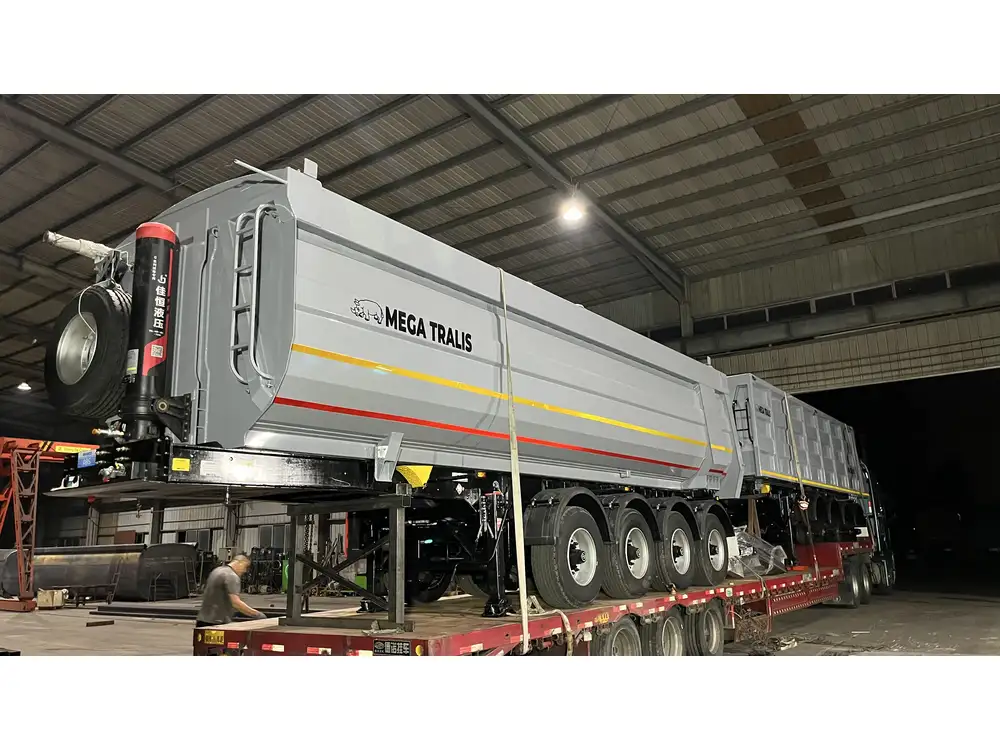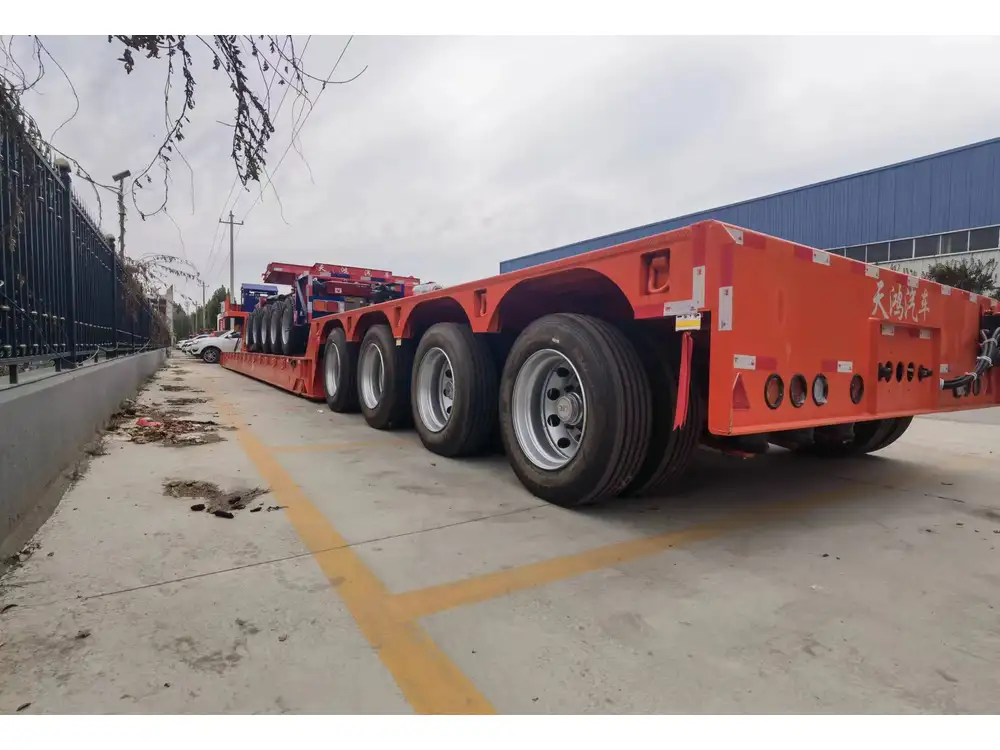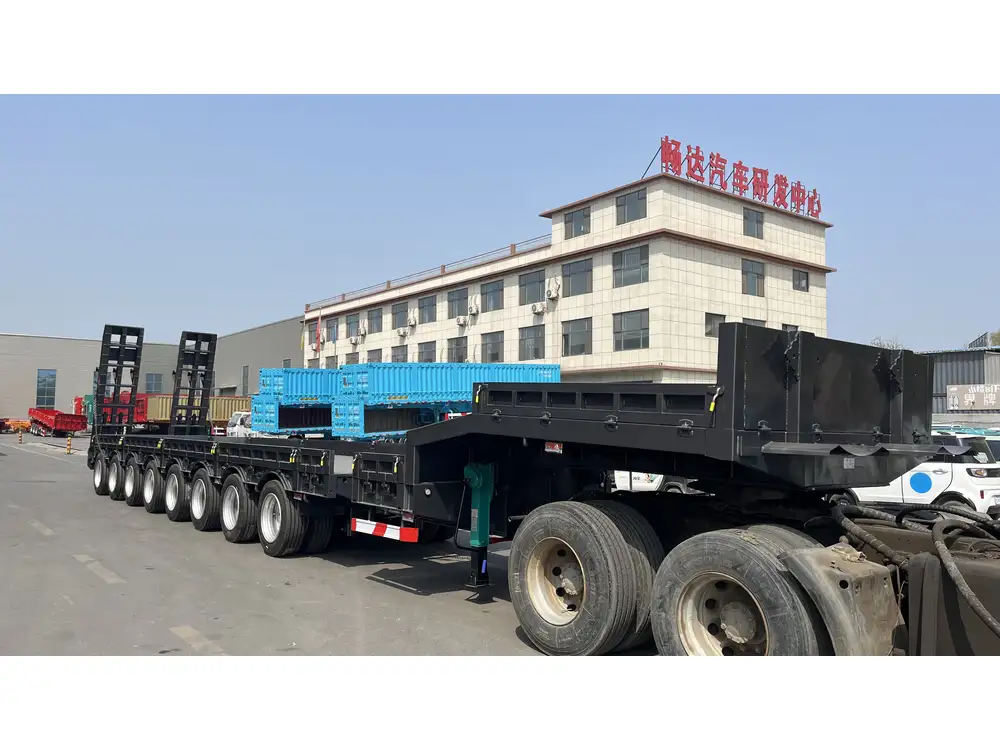When making an investment in enclosed trailers, accuracy in measurement is paramount. Many factors come into play that can influence the suitability of a trailer for your transportation needs. This article delves deep into how enclosed trailers are measured, providing clarity and insight to ensure that you select the right size for your requirements.
Key Dimensions to Consider for Enclosed Trailers
1. Overall Length
The overall length of an enclosed trailer is crucial as it determines not just what can fit within it, but also its compatibility with towing vehicles. The length is typically measured from the very front of the trailer to the rear end, excluding any hitch mechanisms.
| Measurement Type | Importance |
|---|---|
| Overall Length | Critical for vehicle compatibility and maneuverability |
| Interior Length | Essential for cargo fit |
| Exterior Length | Important for storage and transport logistics |

2. Width
The width of an enclosed trailer is another essential measurement. It generally ranges between 6 to 8 feet. The width is measured from one exterior wall to the other. Wider trailers can accommodate broader cargo and may affect towing capabilities.
| Width Category | Description |
|---|---|
| Single Axle | Typically narrower, suitable for lighter loads. |
| Tandem Axle | Offers greater width, stability for heavier applications. |
3. Height
Height, often overlooked, is significant when it comes to cargo management. This measurement is taken from the ground to the highest point of the trailer’s exterior. Adequate height is essential, especially if you are transporting taller items or when loading and unloading.
| Height Measurement | Impact |
|---|---|
| Interior Height | Necessary for cargo clearance |
| Exterior Height | Influences storage and loading area restrictions |
4. Interior Dimensions
Understanding the interior dimensions—length, width, and height—is critical for determining how much cargo can be carried. These measurements should include any features that encroach upon space, such as wheel wells or internal supports.
| Interior Measurement | Consideration |
|---|---|
| Interior Length | Space for long items |
| Interior Width | Fit for bulkier loads |
| Interior Height | Clearance for tall products |

Essential Measurement Techniques
Understanding the right techniques to measure can save time and prevent costly mistakes. Here’s how you can accurately measure an enclosed trailer:
Step-by-Step Measurement Guide
Gather Necessary Tools
- A measuring tape or laser measuring device
- Notepad and pen for documentation
Measuring Overall Length
- Begin at the front of the trailer, excluding any hitch.
- Pull the tape to the very end, making sure to keep it straight for an accurate measurement.
Measuring Width
- Measure from the outer edge of one wall to the opposite side.
- Ensure that the tape lies flat against the surface to obtain an accurate reading.
Measuring Height
- Position the measuring tape on the ground and extend it straight up to the highest point of the trailer.
Documenting Interior Dimensions
- Open the rear or side door and measure from the floor to the ceiling for interior height.
- Measure the length and width using the same process without any obstructions.
Additional Factors When Measuring Enclosed Trailers

1. Payload Capacity
Understanding the payload capacity is crucial, as it represents the maximum weight the trailer can safely carry. This is often determined by the trailer’s construction materials, axle types, and design specifications. When calculating how much weight you can load into your trailer, consider these equation factors:
- Manufacturer Specifications: Always refer to the specifications provided by the trailer manufacturer to determine the safe load capacity.
- Weight Distribution: Ensure that the weight is evenly distributed throughout the trailer to avoid swaying while towing.
2. Trailer Weight
When selecting a trailer, consider both its empty weight and the gross vehicle weight rating (GVWR), which includes both the trailer’s weight and the weight of its cargo:
| Measurement | Importance |
|---|---|
| Empty Weight | Affects towing vehicle capacity |
| GVWR | Critical for safety compliance |
3. Transport Regulations
Regulations regarding dimensions and weights can vary significantly by region or country. Always familiarize yourself with local transport regulations to ensure compliance. Key regulations may include:
- License Requirements: Understand if special licenses are needed for towing larger trailers.
- Height Limits: Some roads have height limits that may restrict taller trailers.

Common Questions Regarding Enclosed Trailer Measurements
What Are the Standard Sizes for Enclosed Trailers?
Enclosed trailers come in various standard sizes, typically ranging from 5×8 feet to 8.5×24 feet. The choice primarily hinges on the intended use.
Comparison Table of Standard Sizes
| Size (ft) | Common Uses | Notes |
|---|---|---|
| 5×8 | Motorcycles, ATVs | Compact for easy towing |
| 6×12 | Lawn equipment, furniture | Good balance of size and capacity |
| 7×14 | Multiple items, tools | Often used for small moving businesses |
| 8.5×24 | Show cars, larger cargo | Best for bulky or large load requirements |

How Do I Determine the Best Trailer Size for My Needs?
Choosing the best trailer size hinges on several factors:
- What items will be transported? Know the dimensions and weight of the cargo.
- What is the towing capacity of your vehicle? Ensure your vehicle can handle the trailer’s weight.
- Do you need room for additional accessories? Account for any tie-downs, shelving, or equipment.
Are Custom Enclosed Trailers Worth Considering?
Custom trailers provide flexibility. With tailored sizes and features, you can ensure the trailer fits your unique requirements. This may include custom ramps, additional doors, or specific interior modifications.
How to Maintain Measurements for Trailers Over Time?
It is prudent to regularly revisit your trailer’s measurements and status, especially if it is undergoing wear or modifications. Tracking wear and tear, load shifts, and even changes in towing vehicle specifications can help prolong the lifespan and safety of your equipment.

Conclusion
Measuring enclosed trailers accurately is a vital process that directly influences transportation efficiency and safety. From understanding the essential dimensions to considering payload and regulations, each element plays a role in ensuring you choose the right trailer for your needs. Regularly updating your knowledge about trailer measurements and best practices will empower your purchasing decisions, leading to effective investments that serve your transportation goals efficiently and reliably. Whether you’re a casual user or a business that relies on enclosed trailers, understanding how these measurements work is the key to successful hauling.
Remember, precision is not just beneficial—it’s essential to maximize your investment and maintain safety on the road. With the insights provided in this guide, you are now equipped to measure enclosed trailers with confidence, ensuring that you make informed decisions tailored to your unique requirements.



